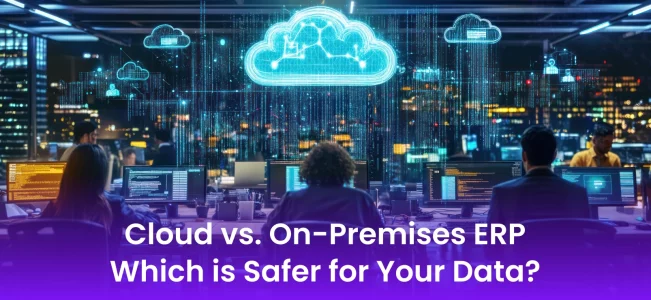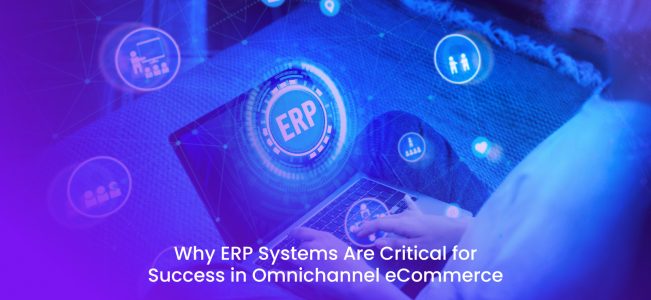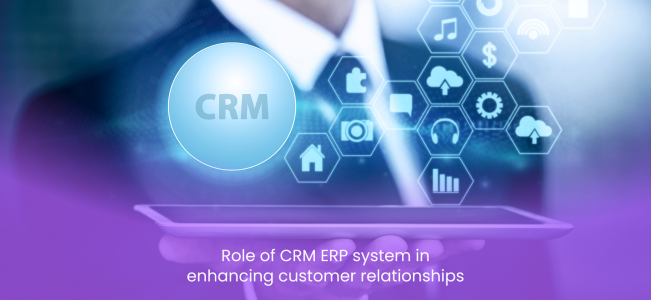The Hidden Costs of Delaying ERP
While the cost of an ERP implementation could intimidate organisations to take the step further, the cost of not implementing an ERP is what they really should be concerned about. Software for enterprise resource planning, or ERP, has been around for a while. Formally introduced in the 1990s, the word “ERP” was in use in mainframe-driven accounting systems as early as the 1970s. These days, it’s a part of a company’s digital transformation to make processes more effective. Organisations rely on ERP systems to engage supply chain management processes with financial and accounting workflows, human resources, CRM systems and more.
The costs linked with maintaining legacy systems or depending on outdated business processes could often far surpass those of a new ERP system implementation. This blog will look into several ways organizations could sustain redundant expenses by delaying ERP implementation.
Wasted Time
Consider how much time you can save by keeping everything in one place. A system that could track, record, analyze, and report. Instead of dealing with errors and workarounds from outdated processes, which can be time-consuming, you can actually work on projects that generate revenue.
According to industry research, the worldwide ERP software market is experiencing robust growth, with predictions demonstrating it will nearly double in size over the coming years, driven by increasing demand throughout various sectors. Organizations could avoid legacy license, hardware, maintenance, and systems administration costs by implementing modern ERP system for operations and finances. This transition not only simplifies operations but also frees up resources to emphasize strategic advantages that drive business success.
Safety Risks
Every business is exposed to cyberattacks, but some setups are considerably more exposed than others. Like how much time, money, and effort are you currently investing to maintain your infrastructure, custom code, and integrations? It includes significant expenses of effort, time, and money to ensure that all systems are updated, safe, and compliant with developing cybersecurity standards. Regular updates, audits, and patches are needed to fortify defences against possible breaches and ensure data integrity and customer reliance. Furthermore, managing custom code and integrations requires continuous monitoring and troubleshooting, straining IT resources and operational productivity. These proactive measures are significant investments in securing against cyber threats and reducing the possible impacts of security incidents on your business operations and status.
Cost of Applications and Extensions
The cost related to applications and extensions could rapidly accelerate for organizations looking to meet particular software functionality requirements. Every individual component contributes to the whole expense, possibly going beyond an integrated solution’s cost, like an ERP. Also, handling several disparate software solutions could be overwhelming, requiring extra resources for administration and maintenance. This fragmented approach not only maximizes financial outlay but also operational complexity, underlining the advantages of combining systems under a unified ERP platform. By doing so, organizations simplify costs, improve efficiency, and lessen the drain on IT and administrative resources.
Data Entry Errors
Not only could data entry errors result in financial losses, but the effort needed to manually correct these mistakes could also be both overpriced and time-consuming. The time and resources that may be better spent on strategic projects are often required to thoroughly examine and fix errors. Inaccurate data can also delay decision-making, which further leads to additional operational flaws and possible challenges. These risks could be significantly decreased by automated data validation and error detection systems, ensuring data accuracy and optimizing resource allocation for more challenging tasks. This proactive approach improves overall data integrity, business adaptability, and operational efficiency.
Additional Resources
The requirement for extra employees and employee hours increases comparably as tasks become more tiresome and time-intensive, requiring supervision of tedious repetitive procedures that require a significant amount of human interaction. The need for skilled workers who can complete these jobs effectively grows as the workload rises. Furthermore, increasing the number of resources needed to handle such demanding responsibilities may strain operating budgets and efficiency, impacting overall productivity and employee satisfaction. Executing automation solutions and simplifying can relieve these burdens, enabling organization to optimize resource usage and emphasizes human capital on value-added activities that drive growth and improvement.
ROI vs. TCO: Understanding the True Cost
When estimating whether to adopt an ERP, companies must not just consider the acquisition price. Alternatively, they should calculate both the Total Cost of Ownership (TCO) and the Return on Investment (ROI):
ROI = (Value of Existing ERP – Cost of Investment) / New ERP Cost
TCO involves not only the initial software and infrastructure costs but also long-term expenditures such as maintenance, support, upgrades, labor, and opportunity costs.
By comparing the value of ERP-driven competences to the cost of sustaining a legacy system, the business case for ERP becomes clear.
Why CERP Suite Is the Right ERP to Avoid Hidden Costs?
When considering the high cost of maintaining outdated systems, CERP Suite offers an intellectual, future-ready alternative. It lessens manual labor, eradicate inefficiencies, and delivers real-time insights throughout your organization. As a scalable, cloud-enabled ERP solution, CERP Suite strengthen businesses to simplify operations and stay ahead in a rapidly developing landscape.
With tailored modules for HR, Finance, Supply Chain, Sales, Compliance, and more, CERP Suite is built to align with your specific departmental requirements, reducing dependence on disengaged tools and decreasing the hidden expenditures that come with fragmented systems.
CERP Suite integrates your processes, simplifies complexity, and promotes improved decision-making to help you avoid the unanticipated yet expensive consequences of delaying ERP installation. This ERP implementation includes automated payroll and attendance monitoring, approval workflows, and customer support.
Conclusion: Delay Is More Expensive Than Action
Think of ERP implementation as an investment in your company’s future. While it’s normal to be careful regarding cost and complexity, it’s even more significant to consider what you’re losing by waiting. From lost productivity and higher operational expenses to maximized cybersecurity risks and slower decision-making, the hidden costs of delaying ERP are real and increasing.
By approving a modern ERP system such as, CERP Suite, you’re not just progressing in the software realm, but empowering your business to grow, modernize, and engage with assurance.












